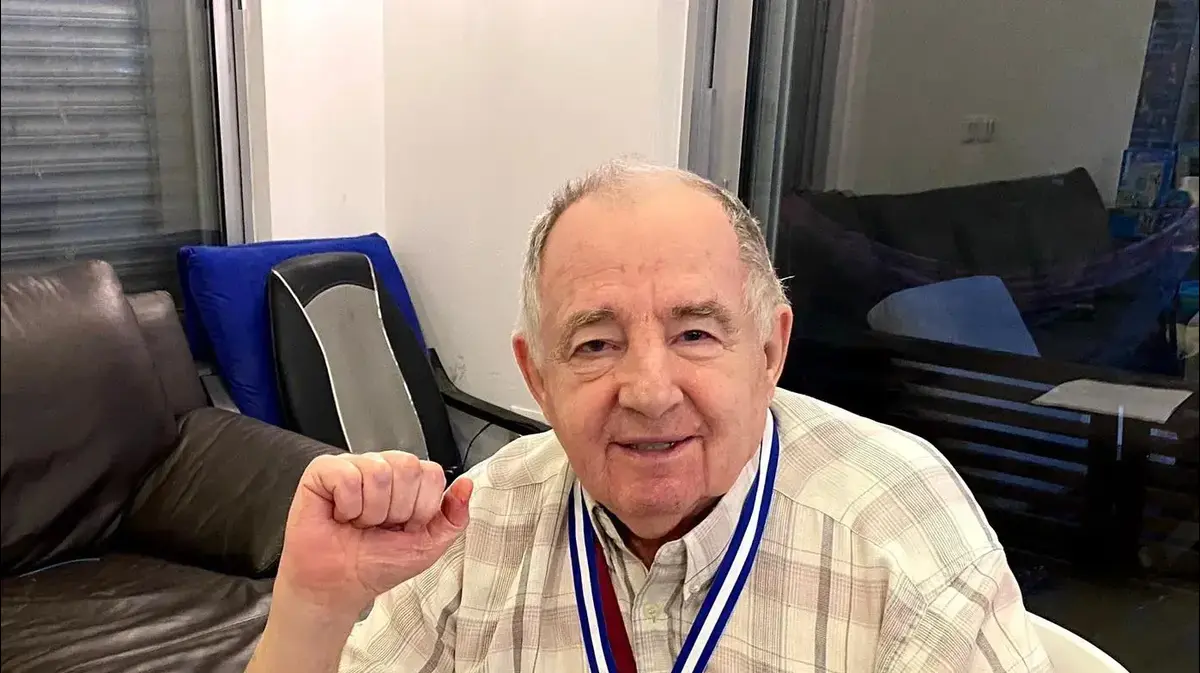marching song
The engineer who fought his body in the Chernobyl disaster and for the recognition of casualties
Alexander Kletirsky was the chief engineer of the concrete dome created to prevent the spread of lethal radiation at Chernobyl.
"It's a matter of humanism," he explained.
"People had to be saved."
In 1992, he immigrated to Israel, thanks to which the status of victims of the disaster is enshrined in law.
On Wednesday he passed away at the age of 80
Eli Ashkenazi
22/01/2022
Saturday, 22 January 2022, 10:00 Updated: 10:06
Share on Facebook
Share on WhatsApp
Share on Twitter
Share on Email
Share on general
Comments
Comments
"I had a responsibility." Alexander Kletirsky (Photo courtesy of the family)
Alexander Kaltirsky was the chief engineer of the construction of the "sarcophagus", which is the concrete dome that was poured over the leaking reactor at Chernobyl to prevent the spread of the deadly radiation, following the severe nuclear accident that occurred at the site 35 and a half years ago. Kalantirsky and his friends physically stopped the spread of the radioactive cloud to large areas of Europe and prevented damage to a large-scale chain, which would have caused, among other things, pollution of water sources, agricultural fields and settlements. He died on Wednesday at the age of 80.
Kletirsky was born in 1941 in Moscow. During World War II his family lived in a village in Tatarstan and after the war he returned to Moscow. After graduating from the Institute of Engineering and Construction, Kalantirsky joined his profession, the Korczatow Institute, a leading research and development institute in the Soviet Union for Atomic Energy. "I started working at the institute in the days when people took burning uranium out of the labs and extinguished it in the sand, with the help of the," he told Walla! Made with him at Chernobyl.
More on Walla!
The gunner from "Zvika Power" who reminded us that victory in war is only possible with teamwork
To the full article
marching song
The teacher from Ramla who fought to get her little sister food in Auschwitz left a mark on the hearts of her students
After losing his family in the Holocaust, David Sarid turned the school in Tiberias into his home and the enterprise of his life
STINGTV series will make your winter perfect - now on special sale
Alexander Kaltirsky in his youth (Photo: courtesy of the family)
He then told Mariana Benanson and Dov Gil-Har that on a Saturday morning, April 26, 1986, he toured as part of his work as an engineer between construction sites in Moscow and returned to the office to handle paperwork.
"At 11 a friend called me and said, 'Sasha, you do not believe what happened in Chernobyl, you just do not believe,'" he described.
He was soon updated on the details of the disaster and began to realize its magnitude.
Two weeks later it was decided that Kalantirsky's office would be in charge of the construction of the large concrete cladding that would block the radiation and he went out to the disaster area to head one of the construction teams.
He described the sight he saw as he approached the Chernobyl area;
The first clear sign of the effect of the radiation was the appearance of the evergreen, evergreen-colored conifers.
"When you are in an area of radiation for a long time, you feel it in your mouth. It tastes like iron," he said.
Prevent the spread of the deadly substance.
Kletirsky while opening a site he led in Moscow (Photo: courtesy of the family)
The Chernobyl disaster was the largest nuclear accident in history. The huge explosion at the reactor released huge amounts of radioactive material into the air. The fire at the site continued to burn for ten days and a radioactive cloud with enormous destruction potential began to spread over the northern hemisphere. The presence at the scene could have been fatal, and indeed many were killed or their health severely damaged.
Thousands of workers were sent to the site in order to stop the leak from the reactor and prevent the spread of the deadly material.
Between June and November 1986, Kalantirsky was chief engineer in one of the 12 departments that built the concrete cladding that sealed the leak from the destroyed reactor.
The employees under his management changed all the time.
He estimates that a total of about 10,000 people worked under him.
Kalantirsky said that when he was called to Chernobyl he knew very well why he was entering.
He worked in a government office responsible for the Soviet Union's nuclear industry, from research to weapons development.
His job was to oversee buildings designed to cool and secure the miners, and was responsible for building residences and public buildings for nuclear industry workers.
Immigrated to Israel together.
Kalantirsky and his wife, Janeta (Photo courtesy of the family)
His stabilization in the heart of the disaster scene seemed to him a step committed to reality. "It's a matter of humanism," he explained. "The people had to be saved, and the experts are the ones who should have done it." In an interview with Walla! Said that if a similar disaster had occurred again and his services had been required, he would not have hesitated to take them on a mission. "Why were there 38 contenders for the role of engineer to be sent to the disaster area? That's the mentality. These were experts who worked with radiation. We built labs for scientists who worked with radioactive materials since 1945," he explained.
He said that while working at the site he and his employees were exposed to extremely strong radiation.
According to him, at the beginning of the work they had no special protective equipment, only simple masks and protective suits.
At one point they received special protective suits donated by the British government.
"It gave us new life," he said.
At the exit from the construction sites in Chernobyl, the level of radiation was measured on each worker's clothes.
Anyone exposed to a certain amount is sent home.
Although it absorbed a higher level of radiation than allowed, he did not leave the place.
"I had a responsibility," he explained.
Fights for the official status of the injured.
Kaltrinsky and his family (Photo: courtesy of the family)
At one point he suffered from internal bleeding and was hospitalized in a Moscow hospital. He returned to Chernobyl only to sign the completion of the project, because the KGB could not move the secret documents from place to place.
In 1992 he immigrated to Israel with his wife, Janeta, and their daughters, Victoria and Orly. The family settled in Bat Yam. Worked as a civil engineer and worked in various jobs. Kalantirsky fought for the granting of official status to liquidators in the country, and indeed the liquidators' law recognizing their status was enacted.
"He was completely dedicated to this role," said Dr. Wadim Hasdan, an activist in the organization and who replaced Kaltrinsky in the position several years ago. "He and the first activists fought to be recognized and even went on hunger strike.
He deserves immense appreciation for what he did after the disaster and for his concern for all the liquidators. "
news
News in Israel
Events in Israel
Tags
marching song
Chernobyl















